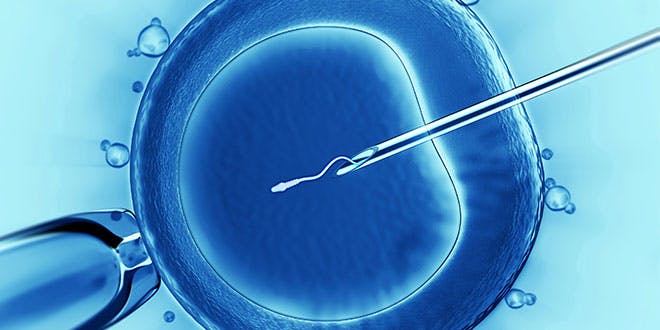Introduction
IN VITRO FERTILIZATION (IVF)
In vitro fertilization is the most common type of assisted reproductive technology (ART). It is the process of fertilization where an egg is combined with sperm outside the body. This fertilized egg is known as embryo. Once the eggs are fertilized, the embryos are placed in the women’s uterus. A colloquial term for babies conceived as the result of IVF, is “test tube babies”.
Indications for IVF treatment

IVF is used to treat infertility caused by many different problems such as:
- Tubal disease: In women with blocked or damaged fallopian tubes.
- Endometriosis: It is a condition in which the tissue that normally lines the uterus grows outside the uterus.
- Hormonal imbalance
- Male factor infertility
- Age related infertility
- Unexplained fertility problems
Procedure
Following are the stages involved in IVF:
Pre procedure investigation
This involves ovarian reserve testing, hysteroscopy.
Ovarian stimulation
Normally, a woman produces one egg during each menstrual cycle. In IVF fertility drugs are given to stimulate the ovaries to produce more than one egg per cycle, this increases the chance of success with treatment. These drugs may include gonadotropin releasing hormone agonists (GnRHa), Pergonal, Clomid, or human chorionic gonadotropin (hcg). Regular blood tests and ultrasounds are needed during this time to keep track of egg production.
Egg retrieval
It’s a surgical procedure performed with anesthesia. During this process eggs are removed from a woman’s ovaries using a needle. A very thin needle is passed into each ovary to remove the egg and fluid out of each follicle. It usually takes 10-30 minutes and the recovery will take about 30 minutes. Medication may be provided to reduce the discomfort.
Insemination and fertilization
Once the eggs are removed, they are mixed with sperm in a laboratory dish. This process of mixing the egg and sperm is called insemination. Sometimes the sperm is directly injected into the egg; this is called intracytoplasmic sperm injection (ICSI). The eggs are monitored to confirm that fertilization and cell division are taking place. After fertilization happens, the eggs develop into embryos.
Embryo transfer
In the final step, embryos are examined, selected and transferred.This normally occurs three to five days after fertilization. Under ultrasound guidance, a thin long catheter containing the embryos is passed through the cervix into the uterus. About 1-3 embryos are transferred into the woman’s uterus. It is generally painless and involves no anesthetic. Pregnancy occurs when the embryo attach itself to the uterine lining. Two weeks after the embryo transfer, pregnancy test is scheduled to determine if the procedure was successful.
After treatment
After the IVF process is complete, bed rest is often advised for around 24 hours.Any kind of vigorous activities should be avoided. Mild cramping and pelvic discomfort are also very common.
Patient may experience lower abdominal pain or bloating following the embryo transfer.
Complications
IVF is generally safe, but as with any medical procedure, there are risks.The possible risks and side effects associated with IVF are:
- Medication side effects: Most common side effect experienced by IVF patients are caused by fertility drugs. These side effects include mild bruising and soreness at the injection site, allergic reaction at the injection site, nausea and vomiting, breast tenderness, mood swings, abdominal pain.
- Ovarian hyperstimulation syndrome (OHSS), a condition involving an excess of fluid in the abdomen and chest. For most women, symptoms will be mild and they will recover easily.
- Multiple pregnancies: when more than 1 embryo is transferred into the uterus, there is an increased chance of having twins or triplets. Multiple pregnancy increases the risk of having a premature baby.
- Egg retrieval: Egg retrieval carries the risk of bleeding, infection, and damage to the bladder.
- Ectopic condition: It is a potentially dangerous medical condition in which an embryo develops in the fallopian tube rather than uterus.
Success rate
Generally, IVF treatment has excellent success rates.The success rate of IVF depends on number of factors which include age, health, infertility cause, uterine lining, and lifestyle factors. The chance of getting pregnant is higher for women younger than 35 years and lower for older women. IVF will not work for a woman who is not capable of ovulating or a man who is not able to produce at least a few healthy sperm.
DISCLAIMER
This web page provides general information and discussions about health, medicine and related subjects. The information and other content provided on this website, or in any linked materials, are not intended and should not be construed as medical advice, nor is the information a substitute for professional medical expertise or treatment.
The content is for information purpose only and is not a medical advice. Qualified doctors have gathered information from reputable sources; however Credence Medicure Corporation is not responsible for errors or omissions in reporting or explanations. No individual should use the information, resources and tools contained herein to self diagnose or self treat any medical condition.
If you or any other person has a medical concern, you should consult with your health care provider or seek other professional medical treatment. Never disregard professional medical advice or delay in seeking it because of something that have read on this blog or in any linked materials. If you think you may have a medical emergency, call your doctor or emergency services immediately.
The opinions and views expressed on this blog and website have no relation to those of any academic, hospital, health practice or other institution. Credence Medicure Corporation gives no assurance or warranty regarding the accuracy, timeliness or applicability of the content.
